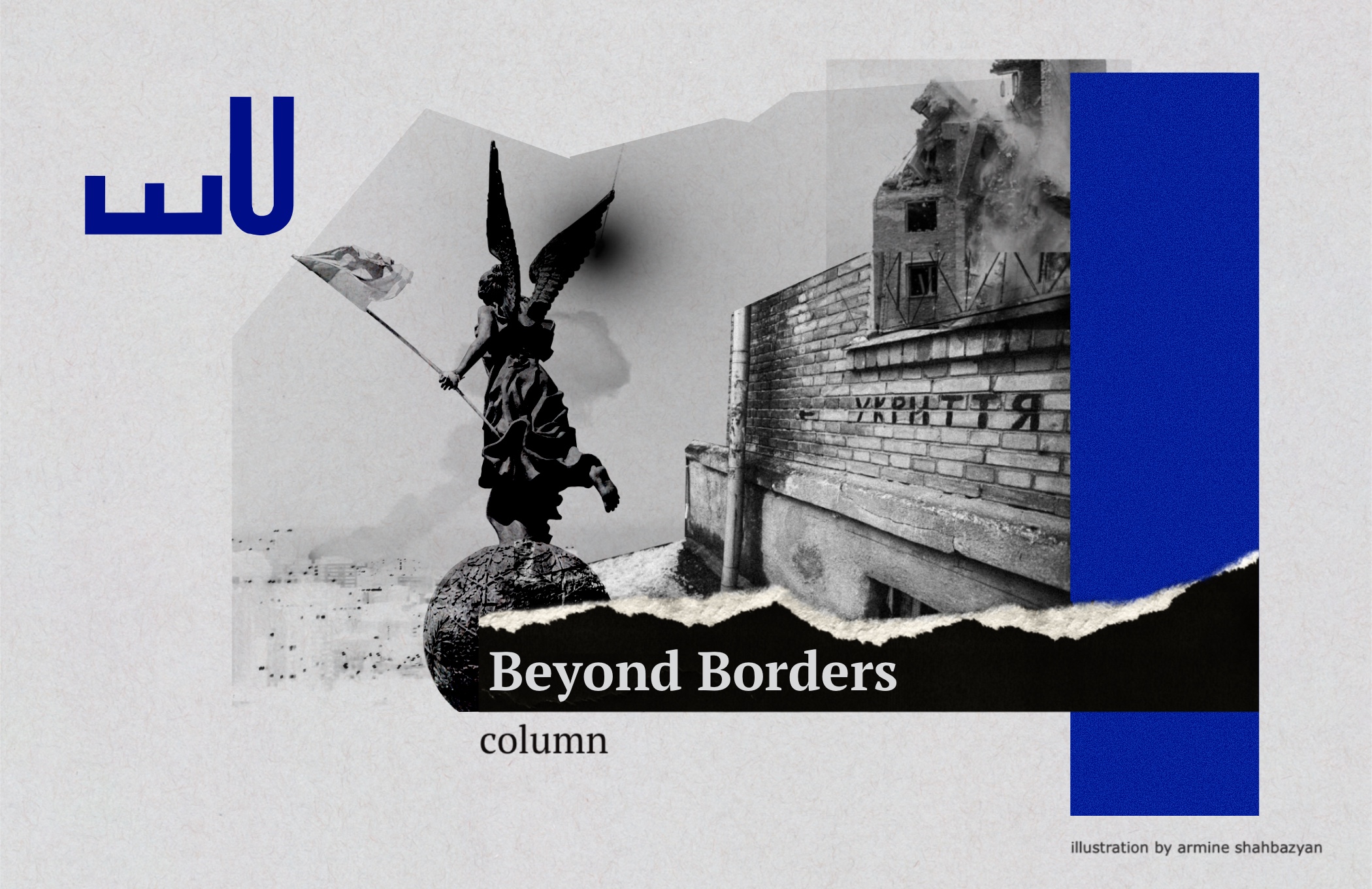[Beyond Borders]
This column explores the key issues shaping life in the South Caucasus, focusing on how the divergent paths of Georgia, Armenia and Azerbaijan reflect the region’s complex histories, economic developments, and political shifts. While new generations in these countries grow more isolated from one another due to language barriers and conflicting national trajectories, the same is true for local policymakers, who are often more familiar with distant capitals than their immediate neighbors. Each nation seeks its own path, sometimes in conflict with others, while international actors often treat the region as a whole, reluctant to craft policies specific to individual states. Drawing on personal experience with the region’s revolutions, conflicts and transformations, Olesya brings you Beyond Borders—a column exploring how decisions made in one corner of the South Caucasus impact all who live there.

Listen to the article.
I woke early to find my phone flooded with messages from friends and family. They had read the headlines and were checking in to see if I was safe. That night Kyiv had suffered one of its heaviest drone and missile attacks in recent memory. Several residential buildings were hit and more than 25 people were buried under the rubble of a collapsed apartment block close to the city’s center.
I was staying nearby. Just before midnight a local friend messaged: “Something big is starting.” Telegram channels were already lighting up with reports—missiles launched from Russian territory, radar tracking aircraft and drones. Minutes later my phone’s air raid alert blared. Visitors are advised to download a special app for such warnings.
The hotel I was staying in is located within a small district that’s under heightened security. Nearby are several government agencies, embassies, and centuries-old churches. Although there have been occasional strikes here during the war, it’s very rare. After the alert I packed a bag with documents and essential clothes and left it by the door, just as I had during the 2020 war in Yerevan, when warplanes flew overhead and online radar maps showed drones nearby. If the situation turned critical, I would have grabbed the bag and headed for the underground parking lot converted into a bomb shelter. I had timed the route in advance, both in Kyiv and back then in Yerevan.
But I never had to move. For hours I listened as drones hummed across the sky. Occasionally I heard the crack of anti-aircraft fire in the distance, then silence. Lying awake I kept thinking of a woman I interviewed in Yerevan during the 2020 Karabakh war. We were sitting outside in a small garden, because of covid restrictions. A gust of wind rustled the trees and ripe acorns rained down. “That’s how the bombs fell on us,” she said. Nothing more was needed to understand what it feels like to live inside a war.
A City That Carries On
By morning it was as if nothing had happened. My early meeting wasn’t canceled, only slightly delayed. I sat at an outdoor cafe table as people rushed by. There was no visible trace of stress on their faces. Some women had done full makeup, even styled their hair—no small thing after a night of bombardment. The scent of blooming linden trees masked any lingering smell of smoke if there was any left in the air.
It was my first time in Kyiv since the full-scale invasion. I had visited before, passing through, meeting friends, sometimes even making new ones. Kyiv remains one of the most welcoming cities I know. Its architecture, shaped by different eras, its streets climbing over hills, the wide Dnipro River, all make the city unforgettable.
But the war has left a clear mark. You feel it the moment you enter. Traffic has thinned—possibly by two-thirds—and only one in three apartment windows is lit in the evening. Roads and facades are fraying, repair budgets long since diverted to defense. Luxury boutiques once bustling now sit empty. Women greatly outnumber men on the streets. And every ten minutes or so you pass a young man in uniform, missing a limb.
The scale of loss becomes clearest in places of mourning. On Maidan, where Ukraine’s most pivotal political events have unfolded, there is now a sea of photos, candles and flags. A few kilometers away the outer wall of a cathedral is lined with thousands of portraits—men and women, names and dates of birth and death. One man smiles broadly, handing a sunflower from a place no one returns. Just these two Yerablurs of Kyiv are enough to grasp the depth of the tragedy behind the casualty dry figures, all too familiar to our own conflict-worn South Caucasus region.
Echoes of the Ukraine War
In Kyiv many keep their windows taped to prevent glass from shattering in an explosion. The frontlines are hundreds of kilometers east, but missiles and drones still target the capital. Experts say the goal is to sustain psychological pressure on civilians and officials alike. The intensity of strikes often spikes around major political events. The attack during my visit coincided with the G20 summit in Canada, where Ukraine’s future was part of the agenda.
Efforts led by Trump-aligned factions in the U.S. to halt the war have yielded little so far. Fighting has not only continued, it has enabled Russian forces to make gradual territorial gains. In parallel, some U.S. officials have raised the possibility of ending military support to Ukraine. If that happens, Kyiv may not collapse immediately, but over time its capacity to resist will likely erode.
Any deal over Ukraine will send shockwaves through neighboring regions. If Western leaders accept Russian territorial gains, it could set a precedent, raising new questions for Georgia’s regions of Abkhazia and South Ossetia, whose independence remains internationally unrecognized since the 2008 war. It could also weaken arguments made by countries like Armenia, where Azerbaijani troops are stationed inside its territory, and where rhetoric about “Western Azerbaijan” continues from Baku.
More immediately, a shift in Western posture could redraw the South Caucasus’ place on the geopolitical map. If NATO turns away from Ukraine, Georgia’s membership hopes—historically tied to Kyiv’s—could vanish. Delays in EU enlargement could dim Armenia’s ambitions to deepen cooperation. While Moldova begins accession talks in the coming days, Ukraine, still at war, remains in limbo.
Fighting to Survive
And yet there is no talk of surrender in Kyiv. News of battlefield setbacks is treated as temporary—challenges to be reversed. For many, European integration is another front in a broader war for survival. Civil society groups chase down officials with reform checklists. “If they refuse,” one activist told me, “they could be killed – not metaphorically. Literally. Because failing to act would be seen as a betrayal of the country’s future.” She wasn’t exaggerating.
As I was leaving Kyiv, I couldn’t shake the sense that in the South Caucasus we’ve been through versions of this before, the 2008 war in Georgia, the 2020 war in Nagorno-Karabakh. They weren’t the first in the region, and they won’t be the last. But none matched the scale or reach of what is now unfolding in Ukraine, for three years and counting.
Sitting at the train station, watching high-rises with shattered windows, I thought of how little the city seems to sleep, and how much weight it now carries. Kyiv may be fighting for its own future. But in doing so, it might also be shaping ours.


